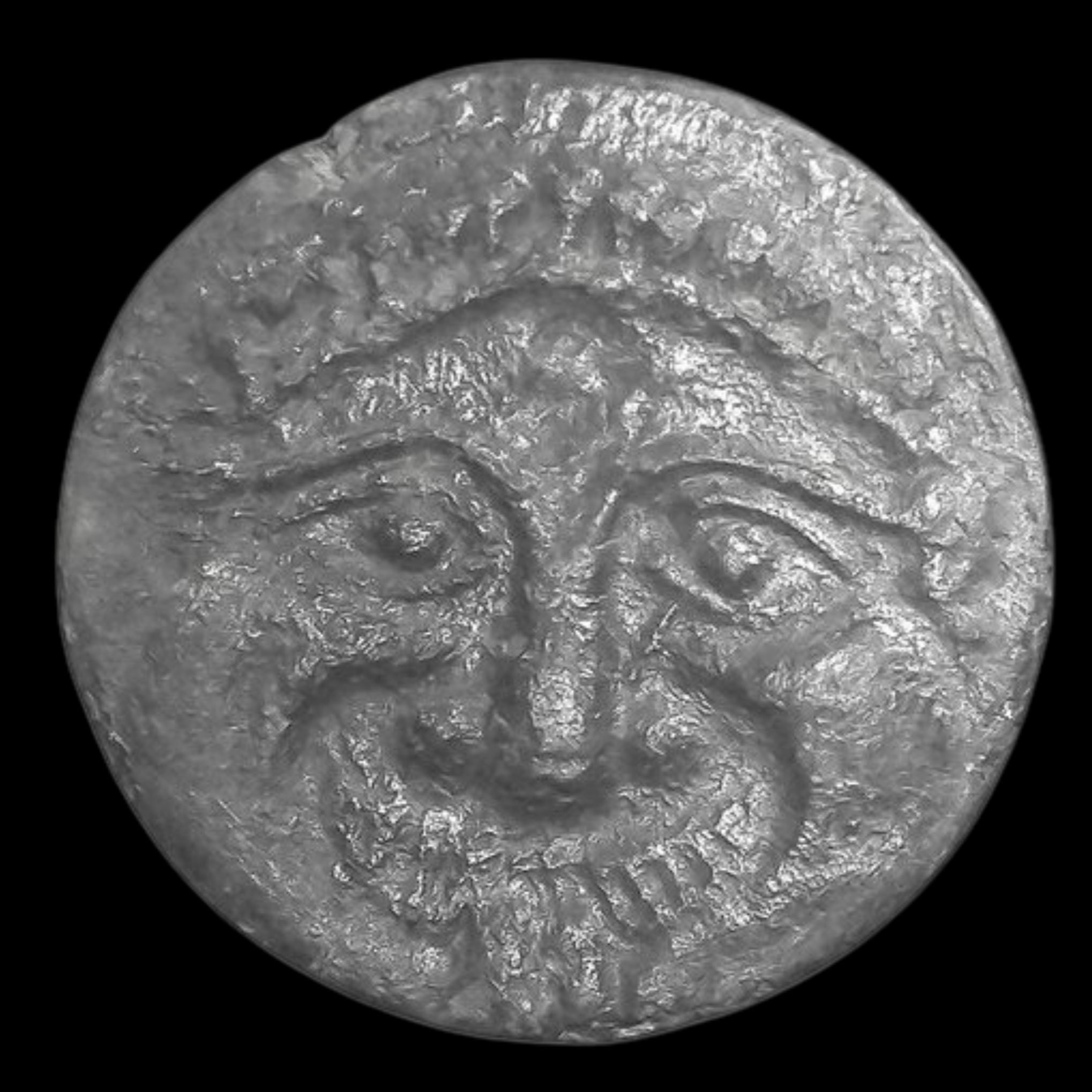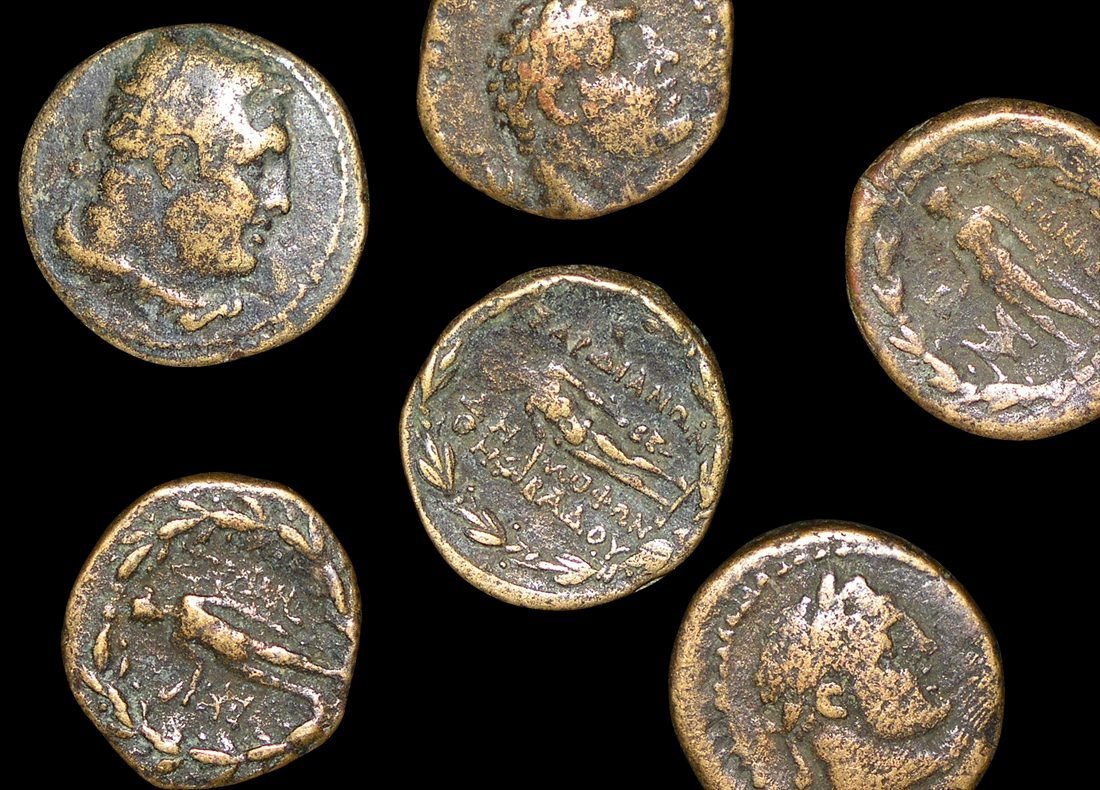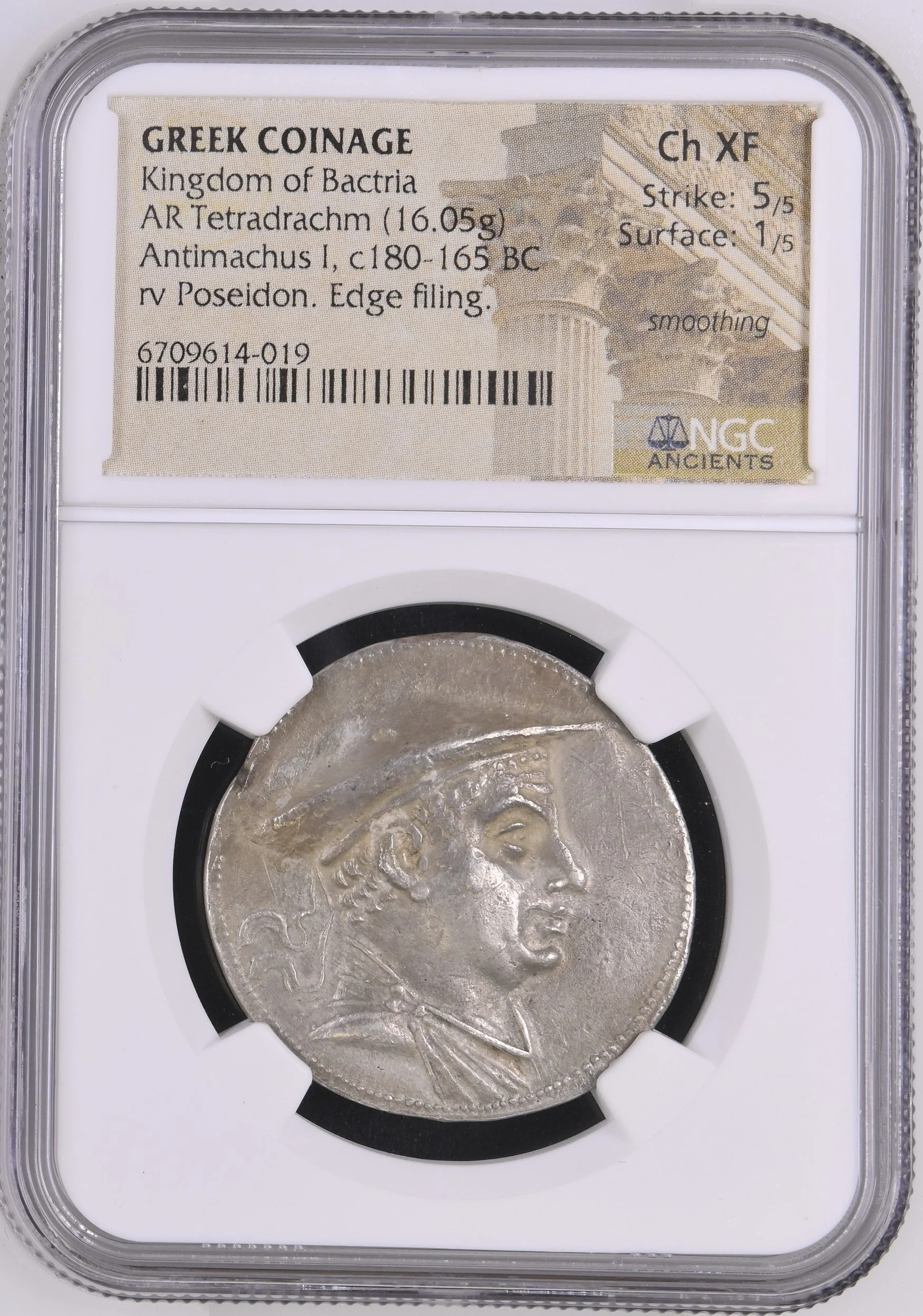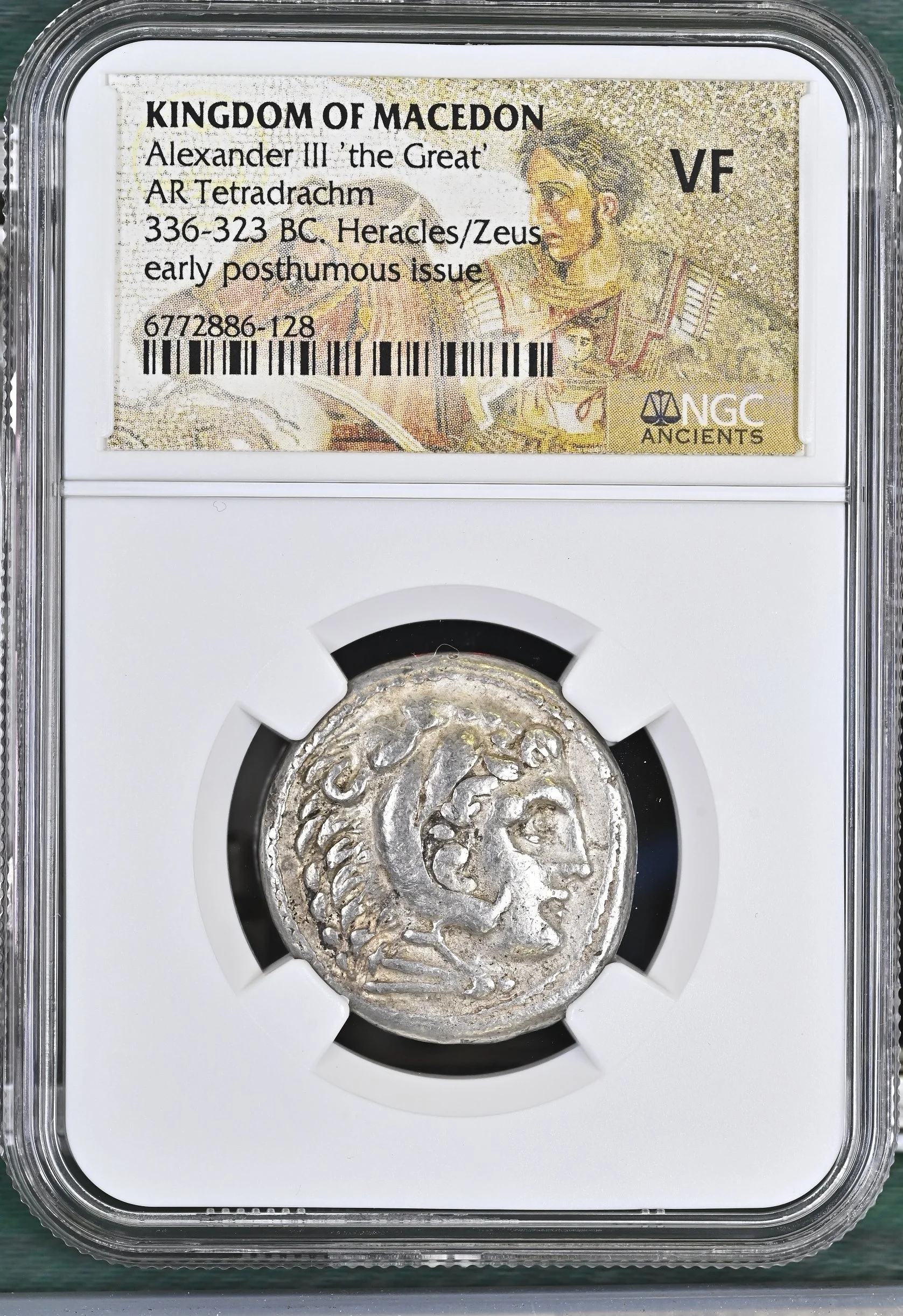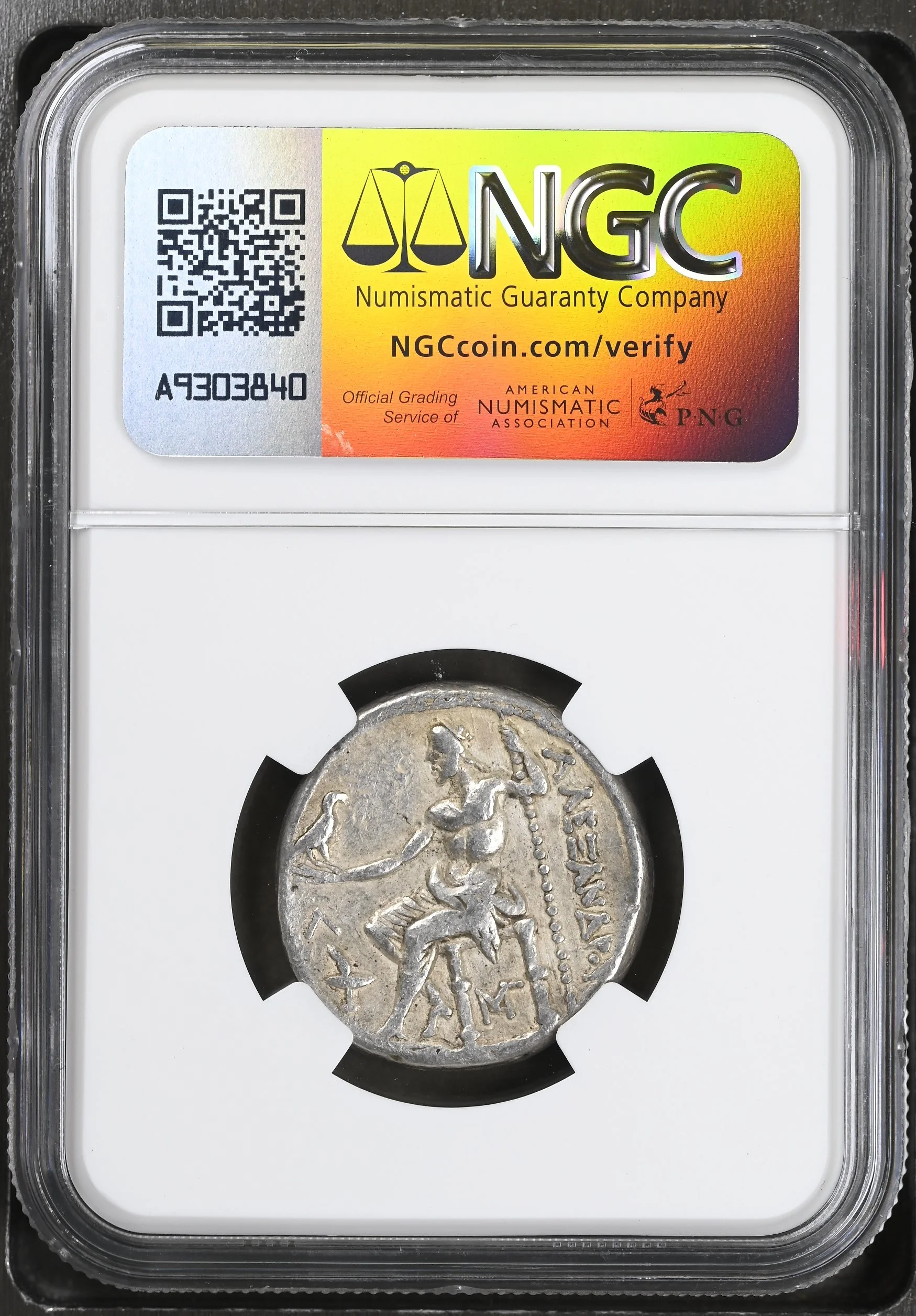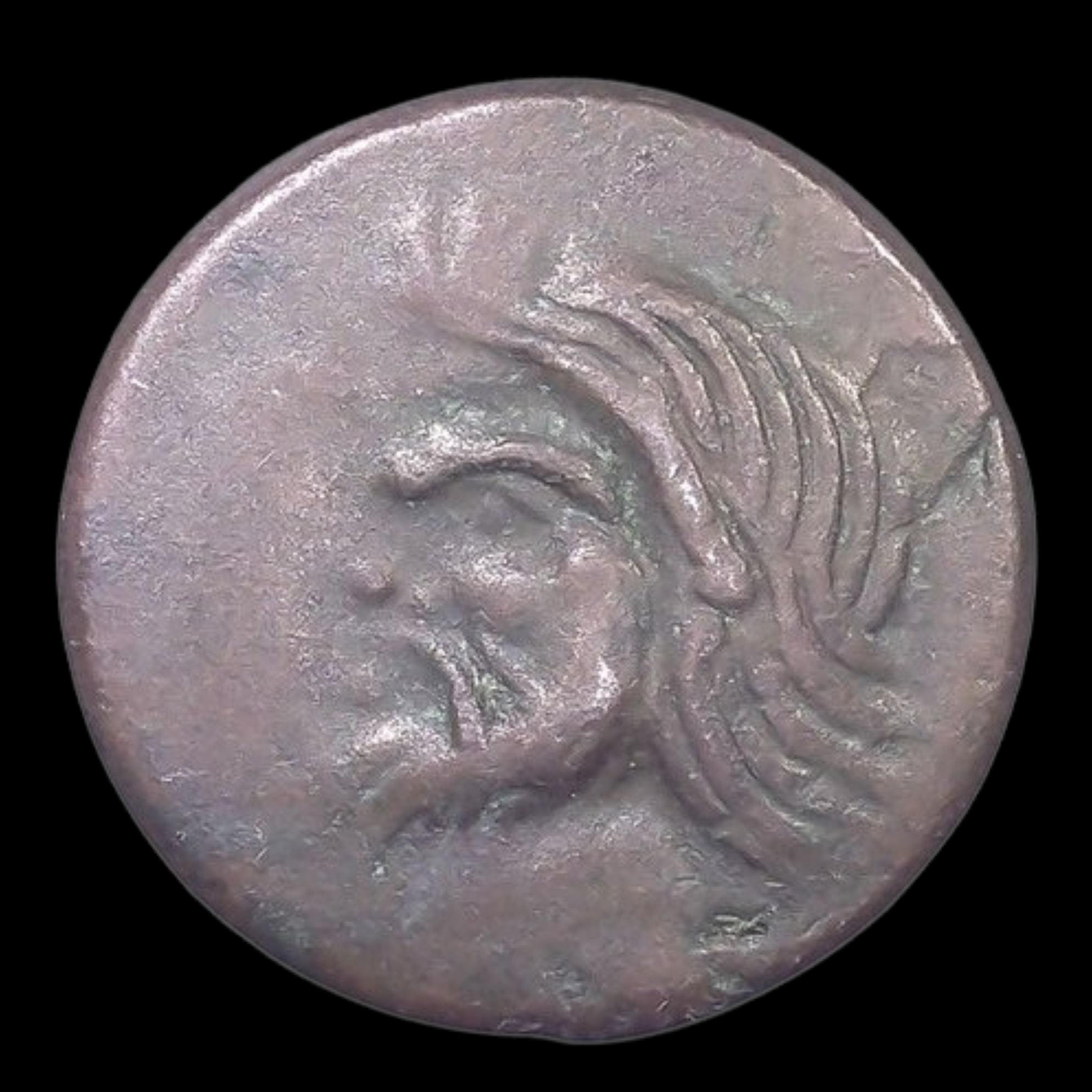 Image 1 of 2
Image 1 of 2

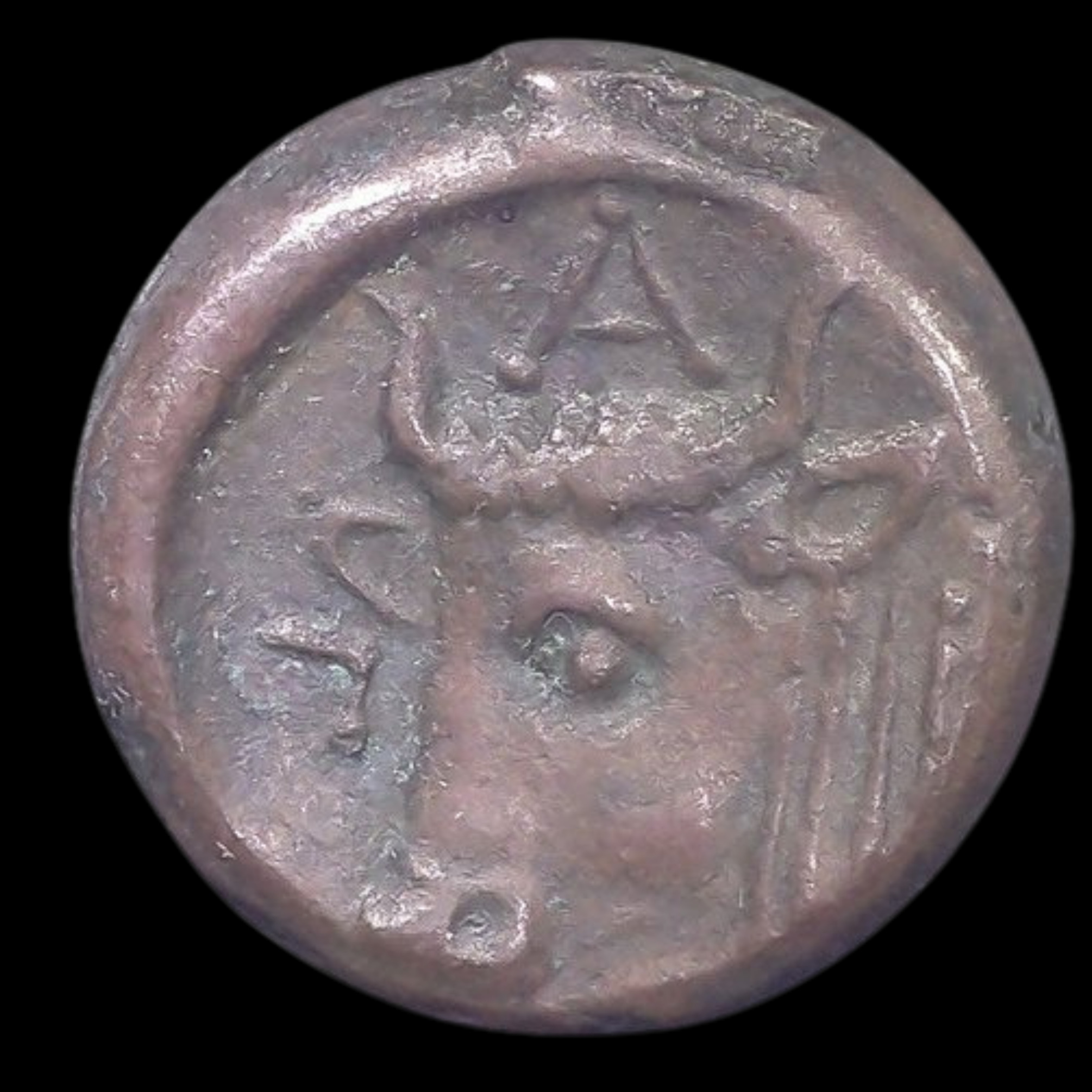 Image 2 of 2
Image 2 of 2



Panticapaeum Bronze Coin from Tauric Chersonesus (about 2300-2400 years ago)
This small bronze coin was produced in the ancient Greek colony of Panticapaeum, located in the Tauric Chersonesus (modern Crimean Peninsula). As the most important Greek settlement in this region of the northern Black Sea coast, Panticapaeum served as a crucial trading hub connecting the Greek world with Scythian territories to the north.
Coin Description:
Front side: Head of young Pan facing left, wearing an ivy wreath (a playful visual pun on the city's name)
Back side: Head and neck of a bull facing left, surrounded by the city's ethnic identifier "Π-A-N" (the first three letters of Panticapaeum)
Technical Details:
Bronze composition
Dimensions: 16×17mm (slightly oval shaped), weighing 4.63 grams
Reference: SNG BM-890
No certification mentioned
Date: 4th-3rd century BCE
Condition: Not specified
Historical Significance:
Panticapaeum (modern Kerch in Crimea) was founded by Greek colonists from Miletus around the 6th century BCE. By the time this coin was issued, the city had become the capital of the Bosporan Kingdom, a Greek-Scythian state that controlled important grain trade routes between the steppes and the Mediterranean world. The use of Pan on their coinage created a clever connection between the deity and the city's name, while the bull likely represented the region's agricultural wealth.
This small bronze coin was produced in the ancient Greek colony of Panticapaeum, located in the Tauric Chersonesus (modern Crimean Peninsula). As the most important Greek settlement in this region of the northern Black Sea coast, Panticapaeum served as a crucial trading hub connecting the Greek world with Scythian territories to the north.
Coin Description:
Front side: Head of young Pan facing left, wearing an ivy wreath (a playful visual pun on the city's name)
Back side: Head and neck of a bull facing left, surrounded by the city's ethnic identifier "Π-A-N" (the first three letters of Panticapaeum)
Technical Details:
Bronze composition
Dimensions: 16×17mm (slightly oval shaped), weighing 4.63 grams
Reference: SNG BM-890
No certification mentioned
Date: 4th-3rd century BCE
Condition: Not specified
Historical Significance:
Panticapaeum (modern Kerch in Crimea) was founded by Greek colonists from Miletus around the 6th century BCE. By the time this coin was issued, the city had become the capital of the Bosporan Kingdom, a Greek-Scythian state that controlled important grain trade routes between the steppes and the Mediterranean world. The use of Pan on their coinage created a clever connection between the deity and the city's name, while the bull likely represented the region's agricultural wealth.


